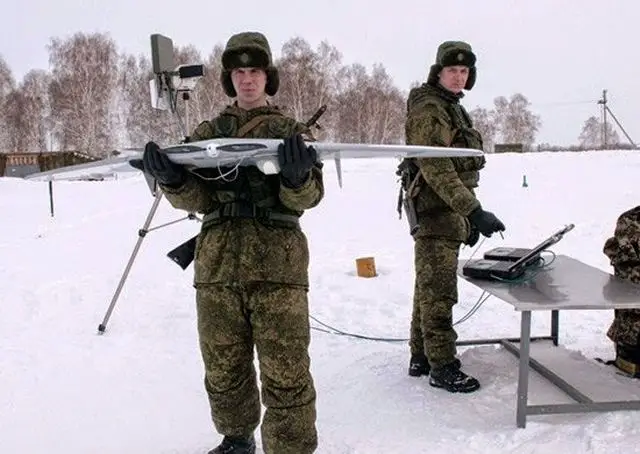Breaking news
Russian troops have used an upgraded version of Tachyon UAV during military exercise in Serbia TASS 10911165.
| 2016
|
|
|||
|
Defence & Security News - Russia
|
|||
|
|
|||
| Russian troops have used an upgraded version of Tachyon UAV during military exercise in Serbia. | |||
|
The Russian, Belarusian and Serbian airborne units participating in Exercise Slavic Brotherhood 2016 in Serbia have used an upgraded Russian-made Tachyon unmanned aerial vehicle (UAV) to coordinate their efforts during airdrops, the Russian Defense Ministry’s press office told journalists.
|
|||
|
|
|||
 Russian army soldiers train with Tachyon unmanned aerial vehicle (UAV) during military exercise (Archive image) Russian army soldiers train with Tachyon unmanned aerial vehicle (UAV) during military exercise (Archive image) |
|||
|
|
|||
|
The Slavic Brotherhood international tactical exercise of Russian, Belarusian and Serbian military units was kicked off near Belgrade on November 2 until November 15, with about 200 Russian service members participating.
"The trilateral interaction of Russian, Belarusian and Serbian units and the coordination during the airdrops were carried out when the troops worked to achieve cohesion. In addition, a training session was held to designate targets for Serbian field artillery elements and conduct air reconnaissance to reconnoiter the [optional] enemy’s positions more accurately," the press office said. Russian airborne scouts also used the UAV to coordinate actions. According to the press office, a Tachyon UAV with an upgraded software package and advanced night-vision cameras has been used at the exercise. "The Tachyon unmanned aircraft will conduct real-time electro-optical reconnaissance," the Defense Ministry said. It also noted that the UAV was capable of air reconnaissance, control field artillery fires and coordinate the troops in the drop zone in the face of heavy countermeasures and radioactive, chemical or biological contamination. The drone is designed for operating five to 40 km behind the forward line of own troops. |
|||
|
|
|||
|
© Copyright 2016 TASS. All rights reserved. This material may not be published, broadcast, rewritten or redistributed.
|
|||




























